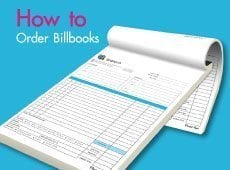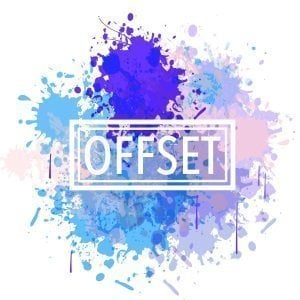You have probably seen many mentions of artwork, bleed, margins, lamination, etc. throughout our website, but do you know what they really mean? To make sure that you do, we have compiled this short glossary of key printing terms.
1. Artwork
Refers to the physical art prepared by a designer, which includes font, graphics, and other visual elements. In the olden days, this was used by the printer to create the actual printing plates. Today, artwork is predominantly electronic, with all digital elements (fonts, images, graphics…) assembled using page layout software (such as Illustrator or Photoshop). For offset printing, the digital artwork is used to create printing plates through a process called CTP (computer to plate).
2. Bleed
Refers to the printed area that extends past the trimming area. Bleed is necessary because it is not possible to print all the way to the edge of the paper. To avoid having white borders around one’s artwork after the cutting process, one extends the printed area beyond the trimming marks. Common practice is to add 3mm of bleed to color and image area for leeway when trimming/cutting.
3. Bond
Refers to the basic paper type used for copying and/or laser printing. High quality bond paper is also used for letterheads and envelopes for example.
4. Crease
Certain print jobs are creased to make their folding easier. Without crease, ink on the fold can also splinter off, and the paper can crack (especially when thicker).
5. Cyan
Cyan is the blue color used in the Four Colour Printing Process.
6. Digital Printing
Digital printing works directly from electronic data and therefore avoids sunk costs associated with creating printing plates. Therefore, digital printing is very cost-efficient for short print-runs. Although the quality level is not yet up to the one of offset printing, it is improving steadily and considerably.
7. Embossing
Refers to stamping a design into the paper to create a raised effect.
8. Finishing
Refers to any post-printing process to “finish” your products. This includes creasing, folding, binding, stitching, laminating, etc.
9. Imposition
Refers to the layout of the artwork pages on the printed sheet. Impositioning can become very complex because different artworks can be combined on a printed sheet, and the pages of each artwork have to be in the correct order when the sheet is folded and cut.
10. Lamination
Refers to the thin plastic sheet that covers the printed surface to protect it and to give it more pop. Can be glossy, matte, or semi-glossy.
11. Offset printing
Offset printing is the traditional method of paper printing using printing plates. However in offset printing the paper does not come into contact with the plate. Offset printing offers higher quality than digital printing, as well as considerable cost efficiencies on long print-runs.
12. Proof
Refers to a test print to give an impression of what the final product will look like. There are several proof methods, but usually proof will be digital. Proofing your prints (especially if you plan on printing a lot) can be a real life- and cost-saver, as you eliminate the risk of receiving 5,000 flyers with a mistake on them.
13. UV Coating
Chemical process of adding a very glossy finish to printed surfaces. The advantage is that it can be applied in certain places only (spot UV). UV refers to the Ultra-Violet lamp under which the sheets pass for rapid drying.
Hopefully, this short list of main printing terms will help you to better understand our website’s content. Feel free to share the knowledge!

















